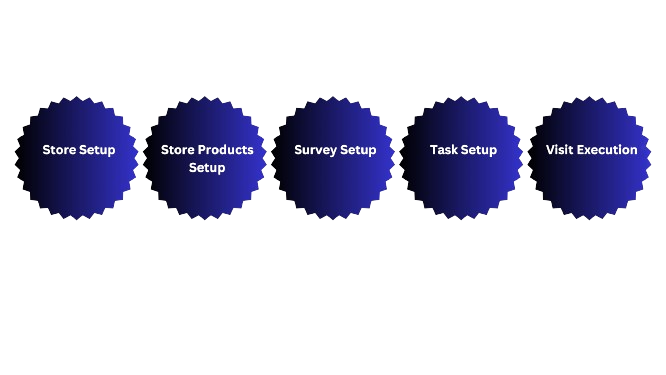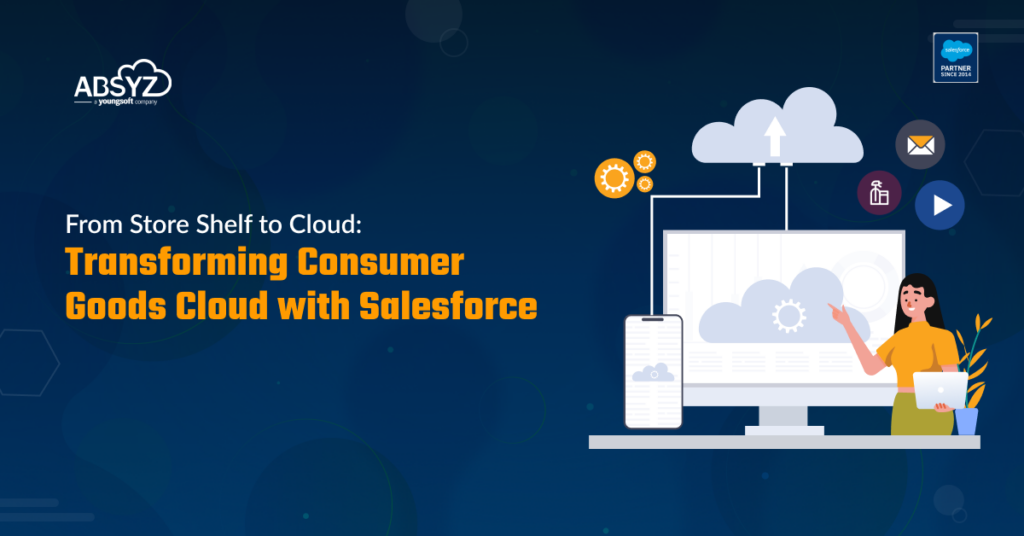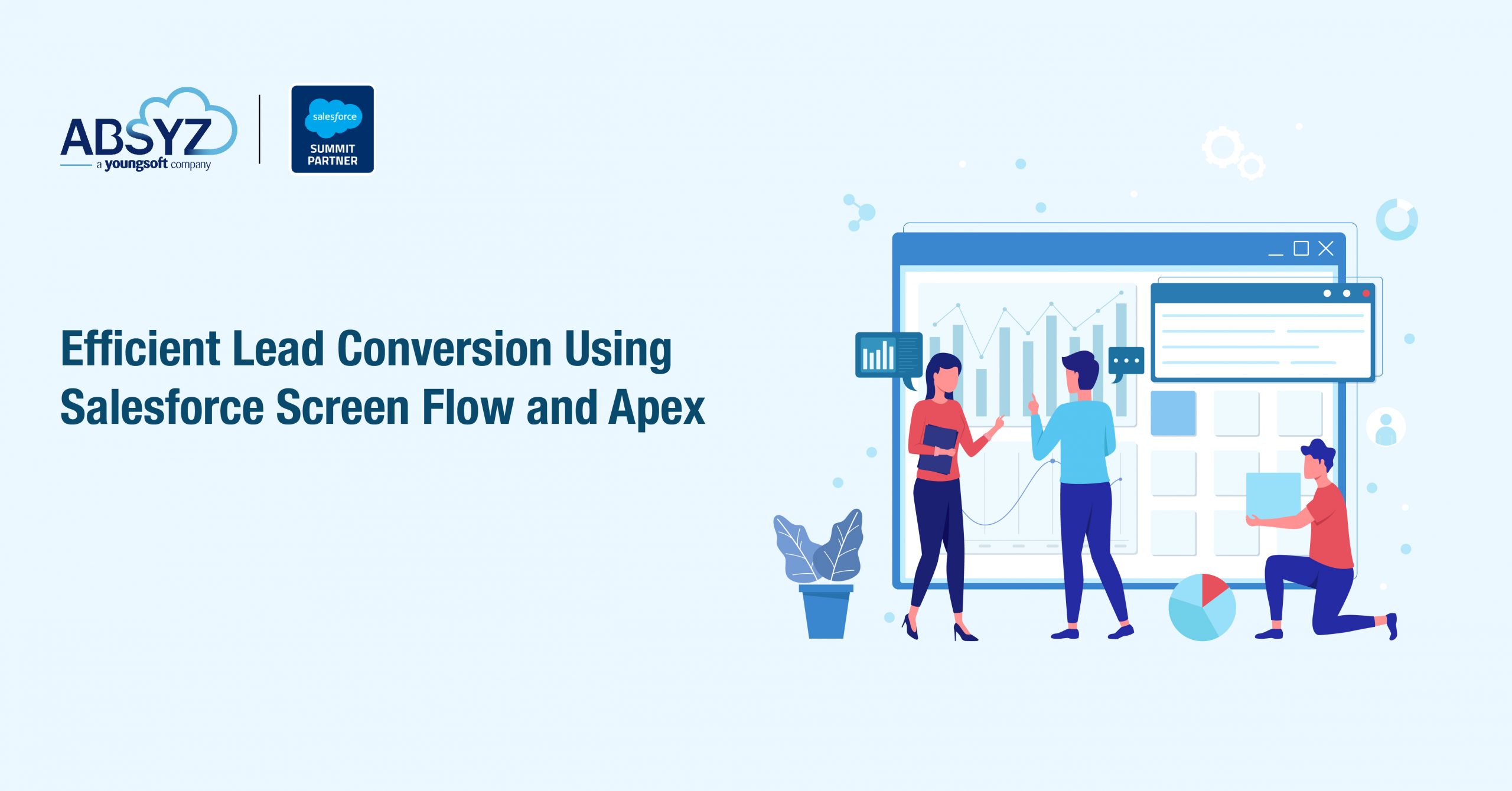Consumer goods refer to items intended for consumption by the general public. These goods, also known as final products, represent the culmination of the production and manufacturing process. Examples include clothing, food items, and household appliances like dishwashers.
In the rapidly evolving consumer goods landscape, where customer expectations and market dynamics are constantly shifting, the need for a comprehensive and agile solution has never been more critical. Enter Salesforce, a powerful cloud-based platform that goes beyond traditional CRM functionalities, offering innovative ways to connect, engage, and streamline operations for consumer goods companies.
Features of Salesforce Consumer Goods Cloud

Store Setup
Setting up a store is a pivotal aspect of efficiently managing consumer goods, and Salesforce plays a transformative role in digitizing and optimizing this process. By centralizing product management, businesses can maintain consistency across channels, swiftly updating product details and ensuring real-time information for customers and internal teams alike. The streamlined order processing capabilities of Salesforce reduce manual errors, enhance order accuracy, and contribute to improved inventory management. The platform’s seamless integration of customer data provides a comprehensive understanding of customer preferences and behaviors, enabling businesses to personalize marketing efforts and foster customer loyalty.
With mobile applications for field representatives, Salesforce empowers on-the-go decision-making during store visits, facilitating efficient task management and customer engagement. The advanced analytics and reporting tools offered by Salesforce provide valuable insights into sales performance, inventory levels, and market trends, enabling businesses to make informed decisions and adapt swiftly to changes.
Furthermore, Salesforce aids in optimizing retail execution by efficiently planning and executing merchandising and promotional activities. The advantages of Salesforce store setup in consumer goods management extend beyond operational efficiency to include agility, enhanced customer experiences, data-driven decision-making, scalability, and a competitive edge, making it an indispensable tool for businesses navigating the evolving landscape of retail in the cloud era.
Store Products Setup
The structuring of products within this CGC (Consumer Goods Cloud) facilitates their utilization across various business operations such as Promotions, Surveys, Grouping, and restocking with remarkable ease.
Much like in other Salesforce Cloud platforms, products are first incorporated into CGC, followed by the setup of stores. However, not all products are guaranteed to be sold by every store in the system. To address this, CGC offers the feature of Product Assortments. Unlike Product Grouping, which focuses on organizing similar products together, Product Assortments allow diverse types of products to be combined. This flexibility empowers individual stores to curate their unique selection of products tailored to the demand at their specific location.
Once products are categorized for each store using product assortments, CGC further simplifies the identification of their exact placement within a store through the setup of In-store locations. These locations, such as “Primary Shelf on Row 1” or “Last shelf 2nd Floor 1st aisle,” can be precisely defined and assigned to specific products. This feature enables even those without prior store experience to efficiently guide customers to the exact location of a desired product.
Certain products may require specialized storage conditions, such as refrigeration or an airtight cabinet. CGC allows the designation of these special locations as Assets, facilitating the inclusion of products requiring specific storage arrangements.
For more detailed organization, CGC introduces Planograms. These plans dictate which products are grouped, the allocated percentage of shelf space for each product type, the count of product facings at eye level, and even competitor facings on each shelf. This virtual store setup aids in meticulous planning, simplifying the arrangement of products within the physical store.
The setup provided by CGC streamlines once-difficult tasks with minimal effort. It significantly enhances tracking capabilities, making complex operations remarkably manageable. For instance, managing Promotions becomes seamless—users can create a promotion, assign it to a Product Category, and even select the in-store location for the product category. This feature empowers Sales Representatives to check the status of promotions during their store visits effortlessly.
Survey Setup
Salesforce Consumer Goods Cloud offers a robust survey setup feature to gather valuable feedback from both store staff and customers. This feedback can be used to improve products, promotions, inventory management, and overall customer experience.
Through various survey types, including in-store surveys for staff, concept surveys for new product ideas, and post-purchase satisfaction surveys, you can gain insights into all aspects of your business. The setup process is straightforward, allowing you to create surveys, target specific audiences, distribute them through diverse channels like email and SMS, and then analyze the data to make informed decisions.
By leveraging survey setup in Consumer Goods Cloud, you can enhance customer satisfaction, refine product development, optimize marketing efforts, and improve store efficiency. Additionally, the integration with existing data within the cloud provides deeper insights for even better decision-making.
Task Setup
Consumer Goods Cloud provides a variety of tools and features for task completion during the Sales Visit. Here are the below-predefined tasks provided by CGC
Planogram Compliance: This refers to verifying if the on-shelf product placement and shelf space allocation in a store align with the pre-defined planogram created by the brand or manufacturer. This planogram is essentially a blueprint for how products should be arranged on shelves to optimize visibility, brand presence, and sales. This increases Sales, Brand Image, and Efficient Inventory Management.
Inventory Management: It focuses on tracking and maintaining accurate product stock levels across various retail channels. This ensures product availability for customers, optimizes supply chain efficiency, and prevents costly stockouts or overstocking. This helps in maintaining Customer Satisfaction, reduced costs, and Enhanced Operational Efficiency.
Promotion Execution: It ensures that in-store promotional activities and materials align with planned marketing campaigns. It focuses on verifying the correct placement and display of promotional signage, displays, and pricing to maximize visibility and impact. It directly influences sales and brand awareness. It increases product visibility and purchasing decisions.
Shopper insights: This is basically about observing the shopper’s behavior, gathering feedback, and identifying potential merchandising improvements. It is all about capturing valuable data on customer behavior directly at the point of purchase. This information provides priceless insights into shopper preferences, buying decisions, and interaction with store environments.
Compliance checks: Compliance checks in CGC help brands and manufacturers verify that stores and retailers are adhering to established guidelines and regulations. These guidelines can encompass various aspects, including Brand Guidelines, Regulatory Requirements, Safety Protocols, and Contractual Agreements.
Price audits: Price audits in CGC involve verifying that product prices displayed in stores accurately match the approved pricing set by manufacturers or brands. This helps ensure fair market practices, prevents revenue loss due to underpricing, and protects brand reputation from customer dissatisfaction caused by inaccurate pricing.
New product launches: New product launches in CGC involve utilizing the platform’s features to support and optimize the introduction of new products in the market. This encompasses various tasks and activities designed to maximize awareness, adoption, and sales during the crucial launch phase. It mainly helps in Growth and Revenue generation, Brand Image Enhancement, Consumer Engagement, and Competitive Advantage.
After these predefined tasks are provided by CGC, we also have the flexibility to create our own Custom Tasks to fit the specific needs and workflows. These Custom Tasks include data collection, observation, photos, signatures, or even delivery tasks.
Visit Execution
In the visit execution process, the journey begins with meticulous pre-visit planning. Sales representatives utilize the platform’s analytics and historical data to identify key accounts, assess performance metrics, and understand customer preferences. This data-driven approach allows for the creation of targeted strategies tailored to individual client needs.
During the actual customer visit, the Salesforce mobile application becomes a powerful tool for field sales representatives. Equipped with real-time information on product availability, pricing, and promotions, sales teams can engage with customers more effectively. The platform’s capabilities extend to order management, allowing for on-the-spot order placement and ensuring accurate inventory tracking. This not only enhances the customer experience but also improves operational efficiency by reducing order processing time.
The Consumer Goods Cloud also facilitates dynamic pricing and promotion management. Sales reps can adjust pricing strategies based on current market conditions, competitor activities, and customer behavior. This agility in pricing helps maximize revenue and ensures that the company remains competitive in a rapidly evolving market landscape.
Moreover, the platform supports intelligent route planning, enabling sales teams to optimize their travel schedules. By considering factors such as location, customer priority, and time constraints, representatives can minimize travel time and focus on high-potential accounts. This not only boosts productivity but also allows for more face-to-face interactions with customers.
The integration of artificial intelligence further enhances the visit execution process (Einstein Analytics). Predictive analytics can offer insights into customer preferences, helping sales reps anticipate needs and personalize their approach. AI-driven recommendations can guide sales representatives on cross-selling or upselling opportunities, contributing to increased sales and customer satisfaction.
The seamless communication between field representatives and back-office teams is a crucial aspect of Consumer Goods Cloud. The platform ensures that the latest information, such as order updates or inventory changes, is communicated in real-time, fostering collaboration and alignment across the organization.
In summary, the visit execution process on Consumer Goods Cloud is a holistic and data-driven approach that empowers sales teams to deliver exceptional customer experiences, drive sales growth, and adapt quickly to the ever-changing dynamics of the consumer goods market.
Conclusion:
Consumer Goods Cloud (CGC) by Salesforce stands out for its tailored features in managing store setup, product organization, surveys, tasks, and visit execution in the consumer goods domain. Its ability to centralize data, enable personalized experiences, streamline operations, and empower sales and operation teams makes it a superior choice compared to other Salesforce clouds. CGC’s holistic approach, powered by real-time insights and seamless communication, equips businesses to excel in a rapidly evolving market, driving growth and delivering exceptional customer experiences.


















